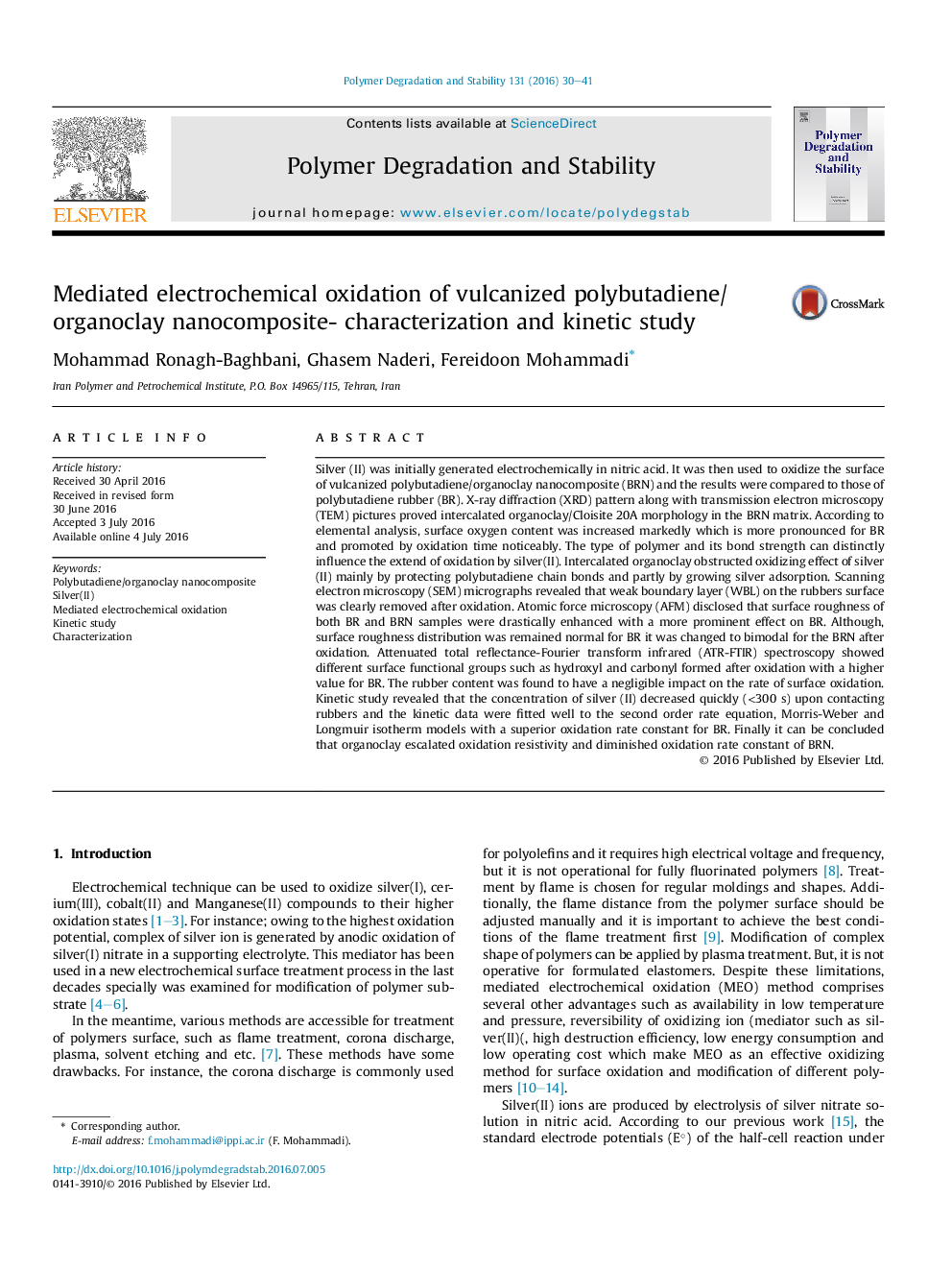| کد مقاله | کد نشریه | سال انتشار | مقاله انگلیسی | نسخه تمام متن |
|---|---|---|---|---|
| 5201040 | 1502882 | 2016 | 12 صفحه PDF | دانلود رایگان |

Silver (II) was initially generated electrochemically in nitric acid. It was then used to oxidize the surface of vulcanized polybutadiene/organoclay nanocomposite (BRN) and the results were compared to those of polybutadiene rubber (BR). X-ray diffraction (XRD) pattern along with transmission electron microscopy (TEM) pictures proved intercalated organoclay/Cloisite 20A morphology in the BRN matrix. According to elemental analysis, surface oxygen content was increased markedly which is more pronounced for BR and promoted by oxidation time noticeably. The type of polymer and its bond strength can distinctly influence the extend of oxidation by silver(II). Intercalated organoclay obstructed oxidizing effect of silver (II) mainly by protecting polybutadiene chain bonds and partly by growing silver adsorption. Scanning electron microscopy (SEM) micrographs revealed that weak boundary layer (WBL) on the rubbers surface was clearly removed after oxidation. Atomic force microscopy (AFM) disclosed that surface roughness of both BR and BRN samples were drastically enhanced with a more prominent effect on BR. Although, surface roughness distribution was remained normal for BR it was changed to bimodal for the BRN after oxidation. Attenuated total reflectance-Fourier transform infrared (ATR-FTIR) spectroscopy showed different surface functional groups such as hydroxyl and carbonyl formed after oxidation with a higher value for BR. The rubber content was found to have a negligible impact on the rate of surface oxidation. Kinetic study revealed that the concentration of silver (II) decreased quickly (<300Â s) upon contacting rubbers and the kinetic data were fitted well to the second order rate equation, Morris-Weber and Longmuir isotherm models with a superior oxidation rate constant for BR. Finally it can be concluded that organoclay escalated oxidation resistivity and diminished oxidation rate constant of BRN.
Journal: Polymer Degradation and Stability - Volume 131, September 2016, Pages 30-41